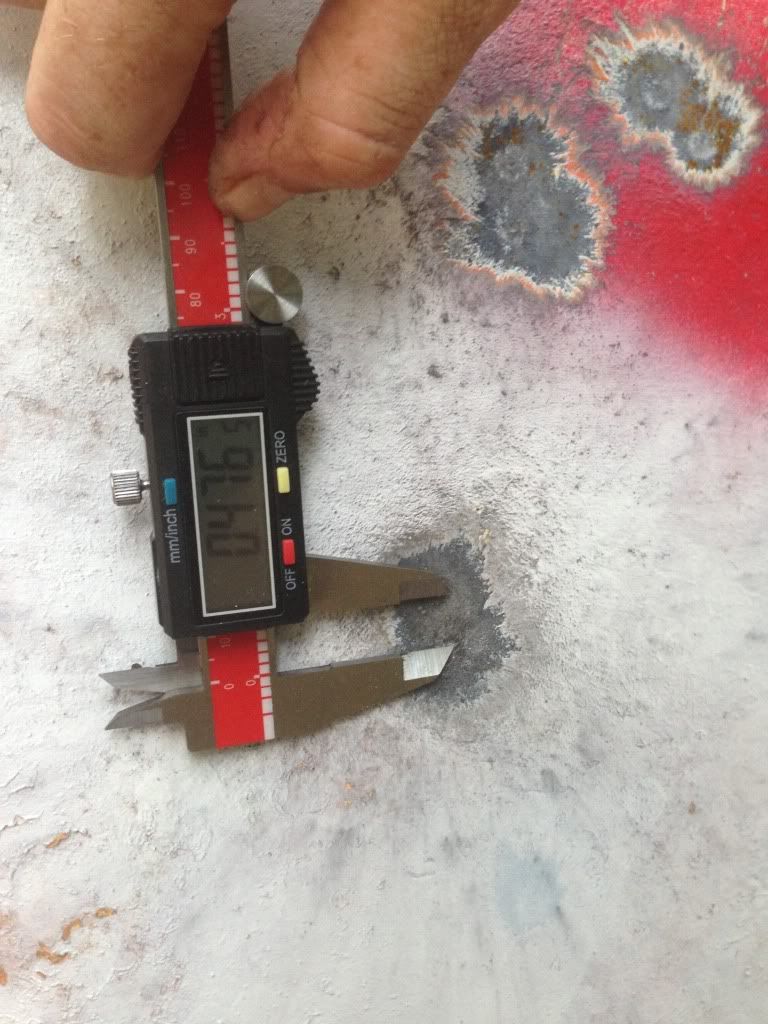I had an interesting thing happen which I can't understand other it (71.5) was too low a charge. Pp 4000mr. 208 amax. Rp brass fully prepped fgm215m. . 700 ss5r mils pec. 26" bbl. at 72.4 it was grouping .475". (4 shots at 240 yards ) with absolutely no op at all. I shot the 71.8 loads to get fire formed brass and got sticky bolt and ejector swipes. Alliant lists 72.0 grains max for a 200 Speer. So why it was like that is beyond me.
Also found an excellent load with the 215. 72.5 r22. Running 2940. Same charge weight with the 208 and 2945.
The 208 with 72.4 power pro was shooting running 2950 to 2960. With a zero at 102 yards it had a 4.8" drop at 240 yards. And shot lights out.
4 shots at 240 yards

Also found an excellent load with the 215. 72.5 r22. Running 2940. Same charge weight with the 208 and 2945.
The 208 with 72.4 power pro was shooting running 2950 to 2960. With a zero at 102 yards it had a 4.8" drop at 240 yards. And shot lights out.
4 shots at 240 yards


